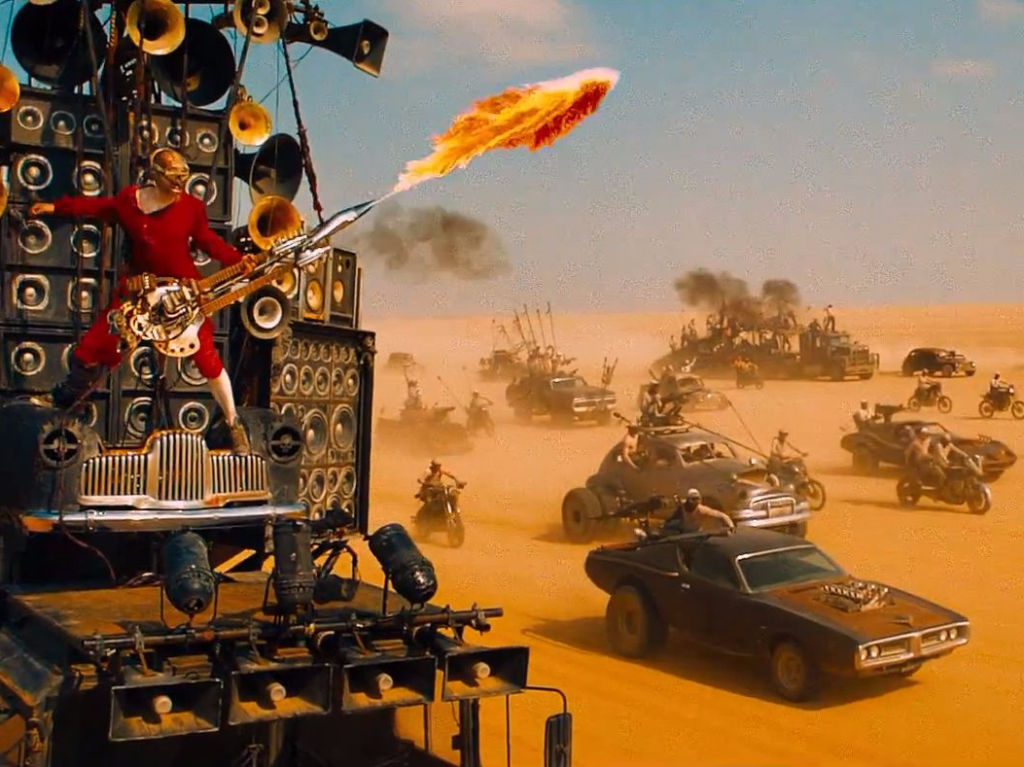Cannes: Mad Max and modern technology, modern action and modern storytelling
 The big budget cinema of spectacle should be better than it used to be. These films should improve with every passing year, as new technologies are developed and filmmakers are given a whole range of cutting-edge toys for their toolbox and, at the same time, the rich history of cinematic ideas and images they can draw from is deepening.
The big budget cinema of spectacle should be better than it used to be. These films should improve with every passing year, as new technologies are developed and filmmakers are given a whole range of cutting-edge toys for their toolbox and, at the same time, the rich history of cinematic ideas and images they can draw from is deepening.
And year on year, these films might be expected to also represent more progressive attitudes towards race, gender and body image, reflecting the ideals that one would hope civilisation is moving towards, either with Hollywood in tow or, better still, keeping the pace.
But rarely do we see a big budget studio movie that feels like an explosion of creativity, utilising modern technology in ways that enhance the experience rather than subtract from it. And still so many action spectaculars are rooted in archaic attitudes towards diversity, representation and even human rights.
But Mad Max Fury Road is exactly what Hollywood action blockbusters should be all about. A masterstroke of a visionary director, aided by a clearly committed cast and crew who seem to have been able to wield every weapon at their disposal to hit every target they might aim for.
Fury Road is not so much a sequel – you would get yourself tangled in knots trying to figure a logical timeline out between the previous films and this – but something like a parallel universe story, sharing a great deal in common with the first three Max films, including the setting and, pretty loosely, Max’s back-story.
But significantly, Fury Road isn’t actually Max’s story at all. Miller, working with co-writers Brendan McCarthy and Nick Lathouris, has chosen not to focus on Max’s struggle in the post-apocalyptic wastelands one more time. Instead, Max has become a satellite character, orbiting the bright star of Furiosa (Charlize Theron) and her cohort of female runaways.
These women have been kept as slaves for procreation, referred to as ‘breeders’ by the cult leader and powerful warlord Immortal Joe (Hugh Keays-Byrne). But they are liberated from this bondage by Furiosa, with some input of their own agency.
Left behind are messages scrawled on the walls of their prison: ‘We are not things’ and ‘Who killed the world?’, angry cries of feminist rage at the way men have fought to posses them, and everything else besides, only to destroy it.
But the filmmakers don’t labour these messages, instead seeding them early and letting them grow steadily and naturally from there on out. Fury Road‘s world view fizzes with its views on female empowerment, but not once does the ideology feel like it has been inserted conspicuously.
Instead, Fury Road has the feeling of fun about it. This is one of the most pulse-racing of action thrillers, filled with startling and exquisitely executed action sequences. Miller understands that he can take the vehicular mayhem that defined the first Mad Max trilogy and up the ante with everything new in modern cinema. Combining location shooting, practical effects, CGI and some of the most extraordinary stunt work outside of Hong Kong or Thailand, the filmmakers have been able craft action beats that both defy belief and keep the film thrusting violently forwards with the audience dragged irresistibly.
After the first thirty minutes of Fury Road feature such an astonishing set piece that it seems impossible Miller could top it, he does. And then he tops that. Each sequence may be an explosion of activity and crammed with so much astounding imagery that you shouldn’t be able to take it all in, but everything is staged, shot and edited with a hard-won fluidity so that the audience will always feel like they know what’s happening, even as the world explodes around them.
This is an all-too rare case of action forwarding plot, characters and theme. The promise of mega-budget spending should be these new worlds, where filmmaking tools are used to show us things we never thought possible, but also to raise the concerns and ideas that need this widest of audiences. Fury Road does all of this, and more.
Mad Max: Fury Road premièred in Cannes, where I saw it in Miller’s preferred 2D presentation, and is now on general release in the UK and US.